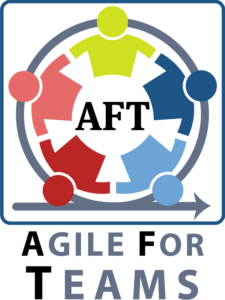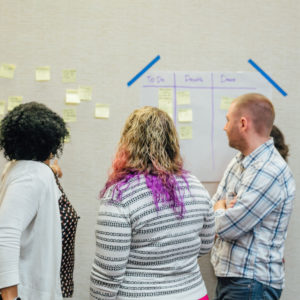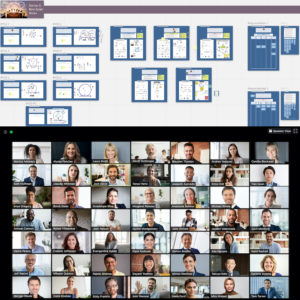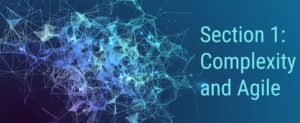The Why and How of Successful Agile Teams

Our Agile for Teams workshop provides a solid, shared foundation in Agile values, principles, and practices for teams. Whether your teams are building software, creating new products, delivering services, or collaborating on any other complex endeavor, the AFT course gets everyone aligned on why and how successful agile teams work. This highly interactive, hands-on course is designed for all roles to attend, including those executing the work, those prioritizing it (Product Owners), those that will coach the team and facilitate effective conversations (ScrumMasters), and those with accountability for team outcomes and success, including managers and close stakeholders.
Is this course for beginners or more advanced teams?
The course is designed so that people at every level of Agile maturity can benefit. We use open-ended exercises that meet people where they are.
| New To Agile | Some Experience | Advanced |
|---|---|---|
| Understand why Agile works, where it applies, and how to get started creating a high-performing Agile team | Connect your current approach back to the basic principles of Agile and Scrum, uncovering opportunities to take your team to the next level | Tap back into the core ideas of Agile: how to collaborate effectively to solve complex problems, and get aligned on the next improvements that will keep your team performing at a high level |
Available in both virtual and in-person formats

Born years before the pandemic, the in-person format of this class is an engaging, hands on workshop where participants work in small teams to both understand and apply concepts.

During the pandemic, we developed a version of the workshop for virtual delivery using Zoom and Miro. Since that time, we’ve continuously improved the class to make it a world class, engaging experience, with the added benefit of practicing remote collaboration using the latest digital tools. In a world where remote and hybrid work is becoming the new normal, learning how to collaborate and connect in this format is a tremendous benefit.
Past attendees shared the following feedback on this course:
- “Delivered extremely well with the utmost clarity. It enables you to think about how to effectively refactor your organization.”
- “It was very engaging and allowed people with various learning styles and abilities to effectively learn the material.”
- “A knowledgeable introduction to Agile. Good for both beginners and those with advanced knowledge of Agile.”
- “Best. Training. Ever!”
This workshop includes 5 sections, and each section can be booked as a stand alone half-day workshop:
1. Complexity and Agile

We start the AFT by exploring four distinct categories of problems through the lens of Cynefin. From this foundation, we look at how Agile values and principles describe how to manage work when the work includes some complexity. Participants evaluate the 12 principles to see how they might apply to their own work.
2. How Scrum Works

With a firm understanding of Complexity and Agile, we look at a common way to structure a team’s work, the Scrum framework. We examine how all the different pieces of Scrum fit together, emphasizing what common problems each pieces addresses.
Next, we learn how Sprints give us the opportunity to run two experiments every week or two: an experiment to test if we are building the right thing for our customers, and an experiment to test if we are building it the best way possible for our team. With that concept in mind, we look at how each Scrum Event helps us frame the experiment, check-in during the experiment, then close the loop on each experiment.
Finally, we examine the roles and responsibilities played on a Scrum team, and how Scrum doesn’t define how many important questions need to be answered. With lots of Q&A built in, participants get to explore how roles might be approached for their team(s) and how to address the most common challenges that Scrum is intentionally silent about.
3. Backlogs and Agile Planning

In this section, we learn how a Product Backlog helps create clarity for what work is most important for the team to collaborate on next. Since Scrum doesn’t provide much context on which patterns are most effective in reaching decisions about that key question, we teach a simple but powerful pattern for taking a big idea and slicing into small slices of work, each slice delivering both value and learning. We use this pattern to prepare for the next section.
4. Using Scrum

In this section of the course, participants practice using Scrum to build an actual product in a couple of Sprints. Applying all of the knowledge from the earlier sections of the class, we “learn by doing”, experiencing what a fully agile approach is to delivering a valuable product while learning and reflecting along the way.
5. Applying Agile Here

After practicing Scrum, participants have a short homework assignment prior to the final 1/2 day: “Make a list of all the reasons this will never work around here”. This allows us to tap into the wisdom of the group to discover the biggest impediments the team is likely to face in shifting to a more agile approach. We then work through a facilitated exercise to come up with small experiments to try that will begin chipping away at those impediments. This section is never the same from group to group, since each group is working from their own real context. It gives participants a chance to explore how to think about change through the mental models we’ve been learning throughout the workshop, with real actionable steps they can take the very next day.